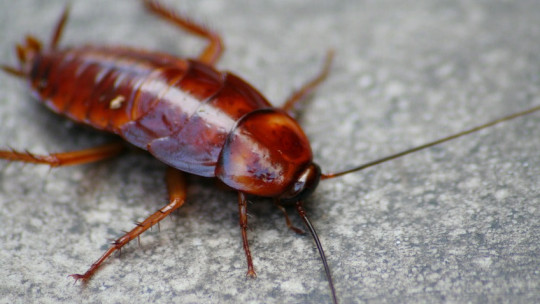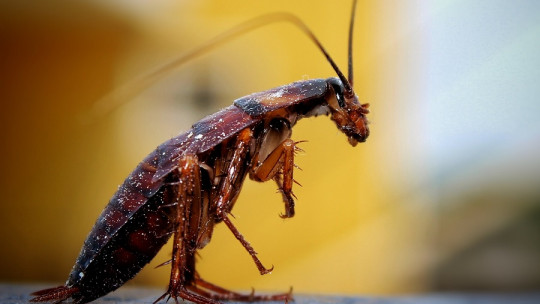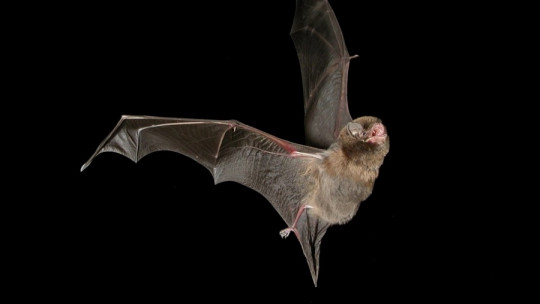
There are many insects or animals that cause disgust, and in some cases fear. Some of the most common may be spiders, snakes and cockroaches. The latter are usually related to dirt, and although in some countries they are considered a delicacy, many people fear them.
The truth is that there are few insects that cause more rejection to humans than cockroaches. These small animals, which have existed for millions of years (they lived with dinosaurs), produce irrational reactions in many people.
In this article We will talk about blatophobia, the irrational fear of cockroaches.
What is blatophobia?
Blatophobia is a phobic disorder and, therefore, belongs to the group of anxiety disorders. Phobias can be divided into two groups. Specific ones, such as aerophobia (fear of flying) or coulrophobia (fear of clowns) and blatophobia; or in complex phobias, which include social phobia and agoraphobia.
Cockroaches are one of the most feared insects since they Disgust and fear are two universal negative emotions. For many, they are disgusting animals, and despite being harmless, some individuals cannot have cockroaches around.
Jeffrey Lockwood, professor of ecology at the University of Wyoming and author of the book The Infested Mind: Why Humans Fear, Disgust, and Love Insectsexplains that “although mosquitoes are more dangerous and can be deadly, they have nothing to do with the reaction that some people have to cockroaches.”
Phobias are disorders that cause great anxiety and discomfort, and to avoid this unpleasant sensation, many individuals tend to avoid the feared stimulus. If they cannot do that, they go into a state of panic when they see the object of their fear. In the following audiovisual content you can see a totally irrational reaction of a girl towards a harmless cockroach
Causes of irrational fear of cockroaches
Phobias usually have their origin in a traumatic experience from the past, and They are learned through a process called classical conditioning, which is a type of associative learning. You can delve deeper into this type of learning in this article: “Classical conditioning and its most important experiments”
Although one of the first researchers to discover this type of learning was Ivan Pavlov, it was John B. Watson who made the term popular in the United States and the first to experiment with it with humans.
In his experiments, he made a little boy named Albert learned an irrational fear of a white rat whom I adored at first. Despite its interesting findings and being one of the most important experiments in the history of psychology, it could not be carried out today since it would not be considered ethical.
You can see a video of this controversial study below:
Other causes of phobias
Other experts also claim that phobias such as blatophobia may be due to other reasons. One of them is vicarious learning, that is, by observation. For example, watching a scary movie in which cockroaches appeared. Phobias can also be due to our biological predisposition, as we are prepared to be afraid of certain stimuli.
Fear is an adaptive emotion that throughout history has allowed the survival of the human species, and that is the reason why phobias are constituted by primitive and non-cognitive associations, which are not easily modified by logical arguments.
Symptoms of cockroach phobia
Regardless of whether they are specific or complex phobias, The symptoms are similar in all phobic disorders s. They are known as anxiety disorders because they are characterized by strong anxiety and discomfort caused by fear or irrational fear when facing the phobic stimulus, anticipating the encounter with it and even imagining it. Mainly, the symptoms of blatophobia can be classified into three groups:
Treatment
Phobias cause great discomfort, but they are curable (at least to the point of greatly reducing their symptoms). In fact, Psychological treatment is very effective in this type of disorders.
Generally, psychotherapy sessions focus on cognitive behavioral therapy, which is a type of therapy that aims to modify those internal events (emotions, thoughts and beliefs) and behaviors that cause discomfort. This form of therapy uses different techniques from behavioral therapy and cognitive therapy, but for the treatment of phobias Relaxation techniques and exposure techniques are really useful. Within the latter, systematic desensitization stands out, in which the patient is gradually exposed to the feared stimulus and at the same time he learns different coping strategies that improve his well-being.
In addition to cognitive behavioral therapy, which belongs to what is known as second generation therapies, today other therapeutic models belonging to the third generation are also used: cognitive therapy based on Mindfulness and acceptance and commitment therapy. This type of therapies do not focus on modifying internal events and behaviors but in the acceptance of the experience and therefore the reduction of the symptoms.
On the other hand, in extreme cases pharmacological treatment can be used but always in combination with psychological therapy.
New technologies and the treatment of phobias
In recent years, with the advancement of new technologies, psychologists have begun to use new tools that help expose the patient to phobic stimuli without the need for them to be present. Virtual reality and augmented reality are some examples.
Furthermore, with the use of smartphones, patients can also have different apps that help overcome phobias. You will find more details in the article “8 apps to treat phobias and fears from your smartphone”.








